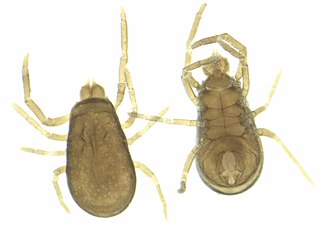Related Research Articles

Horned lizards (Phrynosoma), also known as horny toads or horntoads, are a genus of North American lizards and the type genus of the family Phrynosomatidae. The common names refer directly to their flattened, rounded bodies and blunt snouts.

The Texas horned lizard is one of about 14 North American species of spikey-bodied reptiles called horned lizards, all belonging the genus Phrynosoma. P. cornutum ranges from Colorado and Kansas to northern Mexico, and from southeastern Arizona to Texas. Also, isolated introduced populations are found in the Carolinas, Georgia, and Florida. Most records of the Texas horned lizard from the Piney Woods region of east Texas, Louisiana, and Arkansas are from the early and mid-twentieth century, a time when horned lizard were popular pets, and are thought to represent released or escaped pets and not the species natural range. Though some populations are stable, severe population declines have occurred in many areas of Texas and Oklahoma.
Horned frog is a common name used to identify several kinds of frogs with a hornlike appearance:

Vallo della Lucania is a town and comune in the province of Salerno in the Campania region of south-western Italy. It lies in the middle of Cilento and its population is 8,680.

Labidostomma is a genus of mites belonging to the family Labidostommatidae. The bodies of these mites are covered in a reticulated pattern.

Antirrhinum cornutum is an uncommon species of New World snapdragon known by the common name spurred snapdragon.

Sphenocoelus is an extinct genus of brontothere endemic to North America during the Middle Eocene 46.2—40.4 mya), existing for approximately 6 million years . Fossils have been found only in southern Wyoming and eastern Utah.
Epidendrum cornutum is the accepted name for a species of Epidendrum native to Colombia, Ecuador, Peru, and Venezuela at altitudes of 2.4–3 km.
Heinrich August Ludwig Wiggers was a German pharmacist, chemist and botanist born in Altenhagen.

Bulbophyllum cornutum is a species of orchid in the genus Bulbophyllum.
Skrjabinoptera phrynosoma is a parasitic worm in the phylum Nematoda, the most diverse of pseudocoelomates. Like many other parasites, the life cycle of S. phrynosoma is complicated and it involves two hosts – a lizard and an ant.
Sybaguasu is a genus of longhorn beetles of the subfamily Lamiinae, containing the following species:
Sybaguasu anemum is a species of beetle in the family Cerambycidae. It was described by Martins and Galileo in 2004. It is known from Panama.
Sybaguasu cupreum is a species of beetle in the family Cerambycidae. It was described by Galileo and Martins in 2004. It is known from Costa Rica.
Sybaguasu longipennis is a species of beetle in the family Cerambycidae. It was described by Henry Walter Bates in 1881. It is known from Ecuador.
Sybaguasu thoracicum is a species of beetle in the family Cerambycidae. It was described by Olivier in 1795. It is known from Brazil and French Guiana.
Sybaguasu titingum is a species of beetle in the family Cerambycidae. It was described by Martins and Galileo in 1991. It is known from Peru.

Sargocentron cornutum, the threespot squirrelfish, is a member of the family Holocentridae native to the western Pacific Ocean from Indonesia to the Great Barrier Reef. It lives in coral reefs and drop-offs between depths of 6–40 m (20–131 ft). It is a nocturnal predator, feeding on crabs and shrimps by night and hiding under ledges or in caves by day. It can reach sizes of up to 27.0 cm (10.6 in) TL and has a venomous preopercle.

Genoplesium cornutum, known as Corunastylis cornuta in Australia, is a small terrestrial orchid endemic to the Australian Capital Territory and nearby parts of New South Wales. It was first formally described in 2008 by David Jones who gave it the name Corunastylis cornuta from a specimen collected from the Black Mountain Reserve and the description was published in The Orchadian. In 2014 Julian Shaw changed the name to Genoplesium cornutum. The specific epithet (cornutum) is a Latin word meaning "bearing horns".
Allium cornutum is a species of plant in the amaryllis family and is native to Yugoslavia.
References
- ↑ BioLib.cz - Sybaguasu cornutum. Retrieved on 8 September 2014.
| This Hemilophini article is a stub. You can help Wikipedia by expanding it. |